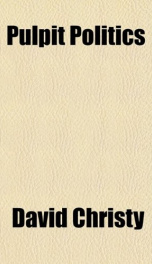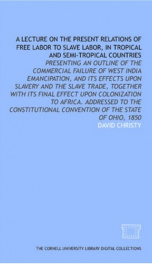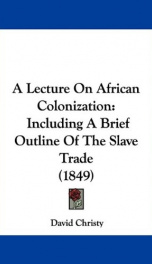pulpit politics

Purchase of this book includes free trial access to www.million-books.com where you can read more than a million books for free. This is an OCR edition with typos. Excerpt from book: 1808, the traffic in slaves could no longer be prosecuted under the sanction of law in either country, and their importation was discontinued. The United States census for 1830, shows that our African population at that date had increased to 2,328,642, of whom 319,599 were freemen, being an increase on the 400,000 originally imported of more than 1,900,000. The census of the British West Indies, taken in 1835, under the emancipation act, shows that these islands, at that date, had a negro population of only 660,000, being a decrease of more than 1,000,000 on the number originally imported. From these facts, the difference in the American and the British systems of slavery, in their effects upon the increase of population, can be readily inferred; and it will be easy to perceive, also, how the American and the Englishman like the two knights of old, when looking at the opposite sides of the bi-col- ored shieldshould have adopted antagonistic theories on this question. It is only in the light of these facts, that any satisfactory explanation can be given, why that eminent philanthropist, Sir Thomas Fowell Bdxton, in 1831, when commenting on the enormous decrease of the slave population in the West Indies, should have employed this language: " Where the blacks are free they increase. But let there be a change in only one circumstance, let the population be the same in every respect, only let them be slaves instead of freemen, and the current is immediately stopped." f Here is the theory of a British philanthropist, based upon the workings of slavery under British rule. Must the American accept this theory, because a philanthropist is its author? Must he let it pass unquestioned, while five distinct American census returns stamp it as erroneous? Why did not Mr. Buxt...
Info about the book
Author:
Series:
Unknown
ISBN:
0044450907
Rating:
4.5/5 (2)Your rating:
0/5
Languge:
English
Users who have this book
Users who want this book
What readers are saying
What do you think? Write your own comment on this book!
write a commentGenre
if you like pulpit politics try:
Do you want to exchange books? It’s EASY!
Get registered and find other users who want to give their favourite books to good hands!




